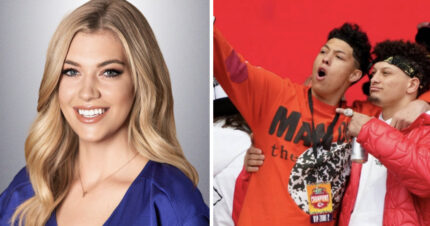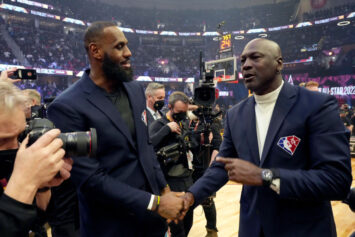In the new doc, “Willie”, O’Ree’s life is featured as one that goes well beyond sports.
When Willie O’Ree met Jackie Robinson at age 14 in Brooklyn, he told Robinson that he was a hockey player.
Robinson told O’Ree he didn’t know that any black kids played hockey.
This is one of the many anecdotes about O’Ree’s life in the upcoming documentary “Willie”, which premiers on April 29 at the Hot Docs Film Festival in Toronto. It traces O’Ree’s journey from his childhood home in Fredricton, New Brunswick, to professional hockey and breaking the color barrier. It includes O’Ree’s Hockey Hall of Fame induction, the vicious racism he faced and how he overcame all of these obstacles, even while playing while blind in one eye.
But the documentary does more than just detail O’Ree’s life. It places his story parallel to the Civil Rights movement and traces the history of his ancestor, Paris, who was a runaway slave from North Carolina.
“I think that the people should have the right to know about my growing up and being involved with the different hockey teams that I played for,” O’Ree said. “I’ve always been subject to racism and prejudice and bigotry.”
O’Ree said he wasn’t subjected to many racial slurs while playing in Toronto and Montreal, but he heard them while playing in the U.S. in cities like Detroit and Chicago.
But he really witnessed the racial divide during the midst of the Civil Rights Movement when he tried out for the Waycross Braves, the minor league affiliate of MLB’s Milwaukee Braves, in 1956.
O’Ree had never been to the south before, but after discussing it with his brother, he decided to go for the experience. The first thing he noticed when he landed in Atlanta were the restrooms, labeled “colored only” and “white only.” His cab driver dropped him off to stay in an all-black neighborhood that night.
“I took the bus to Waycross. Just the feeling of it, it was very uncomfortable for me,” O’Ree said. “Then I was assigned to a dorm with other players of color and then during practice I could hear the racial remarks and the racial slurs from the white players. But again I let them in one ear and out the other. Being down there I just thought to tell myself, you have to be careful where you go and who you talk to and things of that nature. That’s never happened to me before.”
During the tryout, O’Ree and two teammates of color stopped at a drug store to get a drink. They went inside and O’Ree began looking at a revolving postcard rack. A white clerk came over to him, made racial remarks, called him the n-word and told him he couldn’t be in the store. He left.
“I waited for the two players to come outside and we waited for the bus to pick us up and take us back to the camp,” O’Ree said. “I never left the camp until they cut me and I came back to my home.”
He was sad he was cut, but happy to be going home.
As the documentary highlights, O’Ree was tight-lipped about racism when he was younger. He began speaking out after an incident with him and close friend Stan Maxwell, another black teammate who played with the Quebec Aces from 1956-58.
Maxwell was light-skinned and was able to enter places O’Ree could not. In one instance, the pair decided to go to a restaurant. Maxwell walked past the doorman, but O’Ree was stopped and informed black people were not allowed. Maxwell returned for O’Ree, heard the doorman repeat that black people were not allowed and a small confrontation ensued.
“They almost got into an argument,” O’Ree said. “When Stan found out I couldn’t get in, he came back outside and we went to another place. I think after that I started speaking out a little bit.”
Racism places victims in a lonely, vulnerable place. It’s a place where individuals are isolated because others around them can’t relate or experience it. When O’Ree was playing, there were few people who spoke up against racism. The one person he remembers is Punch Imlach, who played with the Quebec Aces and then coached.
“Punch was one of the gentlemen that spoke out. He had an all-black line playing with the Quebec Aces. At that time he had Herbie and Ossie Carnegie and Manny McIntyre,” O’Ree said. “Herbie was thought the better player of the three and had the opportunity to go to training camp to other hockey teams but he wasn’t chosen because of his color. I think Punch was probably the one that spoke out and made it possible for other black players to play in the league.”
Unfortunately, as noted in the documentary, players still face racism today. And so does O’Ree, who said he received racist comments in the past few months. Players today, from youth to professional, still hear racial slurs.
O’Ree does his best to help them.
“I’ve came across so many boys and girls that I found out they’ve had problems with racism and prejudice, and you have to deal with it in your own way,” O’Ree said. “How I dealt with it is it went in one ear and out the other. But for some of the young boys and girls that I’ve gotten letters from and talked to on the phone, it’s a little difficult for them because they’ve never been exposed to that before and it’s making a change in how they’re growing up.”
When he retired from hockey in 1979, he knew he wanted to return. And helping those players of color become his purpose.
He was approached by the NHL to join the league’s diversity program and has worked there for the past 22 years, traveling to various hockey programs, boys and girls clubs and juvenile detention facilities.
“I still say that you have to work towards your goals and stay focused in what you want to do,” O’Ree said. “For some it comes hard, some it may come a little easier. But I think that’s the only way. You have to believe in yourself and you have to feel good about yourself and you have to like yourself.”
O’Ree’s work both on the ice and in the community has been, and still is, an inspiration for numerous players of color at all levels. It also earned him a Hockey Hall of Fame berth in 2018.
“Willie” takes us through his life journey in an inspirational, honest way, adding more respect and admiration for a man who endured and persevered. It brings both die hard and casual hockey fans together in appreciation of a hockey legend, while also educating people who might not know about Willie O’Ree and his place in history.
But back in 1962, long before his on-ice and off-ice contributions were recognized, he was already well-known to someone else – Jackie Robinson.
Because when the two met again, 13 years later, Robinson remembered O’Ree.
“You’re the young fellow I met in Brooklyn,” Robinson said.
Willie O’Ree’s life is one truly steeped in history.



